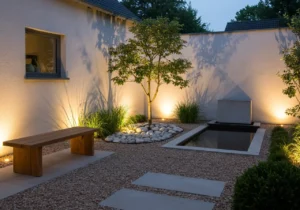Hey there, fellow home and garden lovers! I’ve always been drawn to spaces that just *breathe* peace, you know? There’s something so special about a Japanese garden, isn’t there? It’s not just a collection of plants; it’s a feeling, a sense of calm that washes over you the moment you step inside. For years, I dreamed of bringing a little bit of that Zen tranquility into my own outdoor space. It wasn’t about a huge elaborate project; it was about finding small, meaningful ways to create a peaceful retreat. Today, I want to share 10 Japanese garden ideas that helped me achieve that feeling, and how you can too, no matter the size of your garden.
Create a Meditative Japanese Garden Entryway
When you think about a peaceful Japanese garden, that sense of calm should start right at the beginning, shouldn’t it? I found that making my entryway feel special was the first step in creating that overall sense of tranquility. It sets the mood before you even fully enter the garden.

Why This Works:
A well-designed entryway acts as a gentle transition point, signaling a shift from the outside world to a place of peace and reflection. It prepares your mind and senses for the tranquility within the Japanese garden.
How You Can Recreate It:
- Place a simple stone lantern or a small Buddha statue near the entrance.
- Use stepping stones set in gravel or moss to create a clear path.
- Incorporate calm-colored plants like ferns or hostas in simple, earthy pots.
Install a Peaceful Rock Garden Feature
One of the elements I fell in love with in Japanese gardens is the rock garden. It’s like a piece of art drawn in stone and sand. I remember spending ages just observing the patterns and feeling a sense of stillness. It’s a powerful way to add a focal point that inspires contemplation.
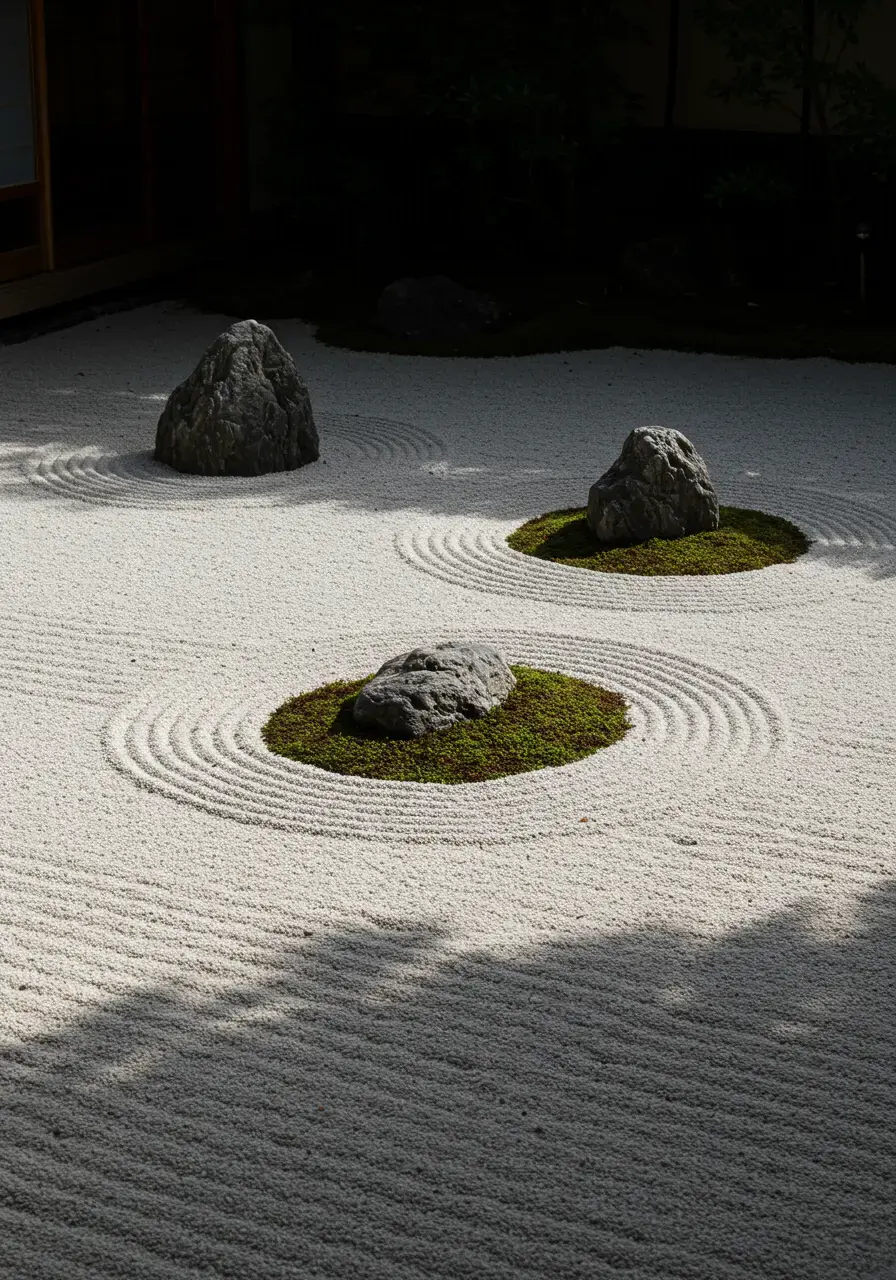
Why This Works:
Rock gardens symbolize natural landscapes and islands, offering a simple yet profound visual element that promotes meditation and a connection to nature.
How You Can Recreate It:
- Choose a few carefully selected rocks of varying sizes and shapes.
- Arrange them to represent mountains or islands within a bed of raked gravel or sand.
- Keep the design simple and uncluttered, focusing on the balance of the elements.
Add a Calming Water Element to Your Design
Water has this amazing ability to soothe. The gentle trickle or the still reflection in a Japanese garden just melts away stress. I knew I needed some form of water feature to truly capture that feeling of Zen tranquility in my own space.

Why This Works:
The sound and sight of water are inherently calming and introduce a sense of movement and life into the garden, representing purity and renewal.
How You Can Recreate It:
- Install a small fountain, a bamboo water spout (shishi-odoshi), or even a simple bird bath.
- Ensure the water flow is gentle and the sound is peaceful, not overpowering.
- Consider a small pond if space allows, to add a reflective surface.
Incorporate Traditional Lanterns in Gardens
Lanterns aren’t just for light in a Japanese garden; they’re carefully placed elements that guide the eye and add a touch of timeless charm. When I added a stone lantern to my garden, it instantly felt more authentic and serene, especially as dusk settled.
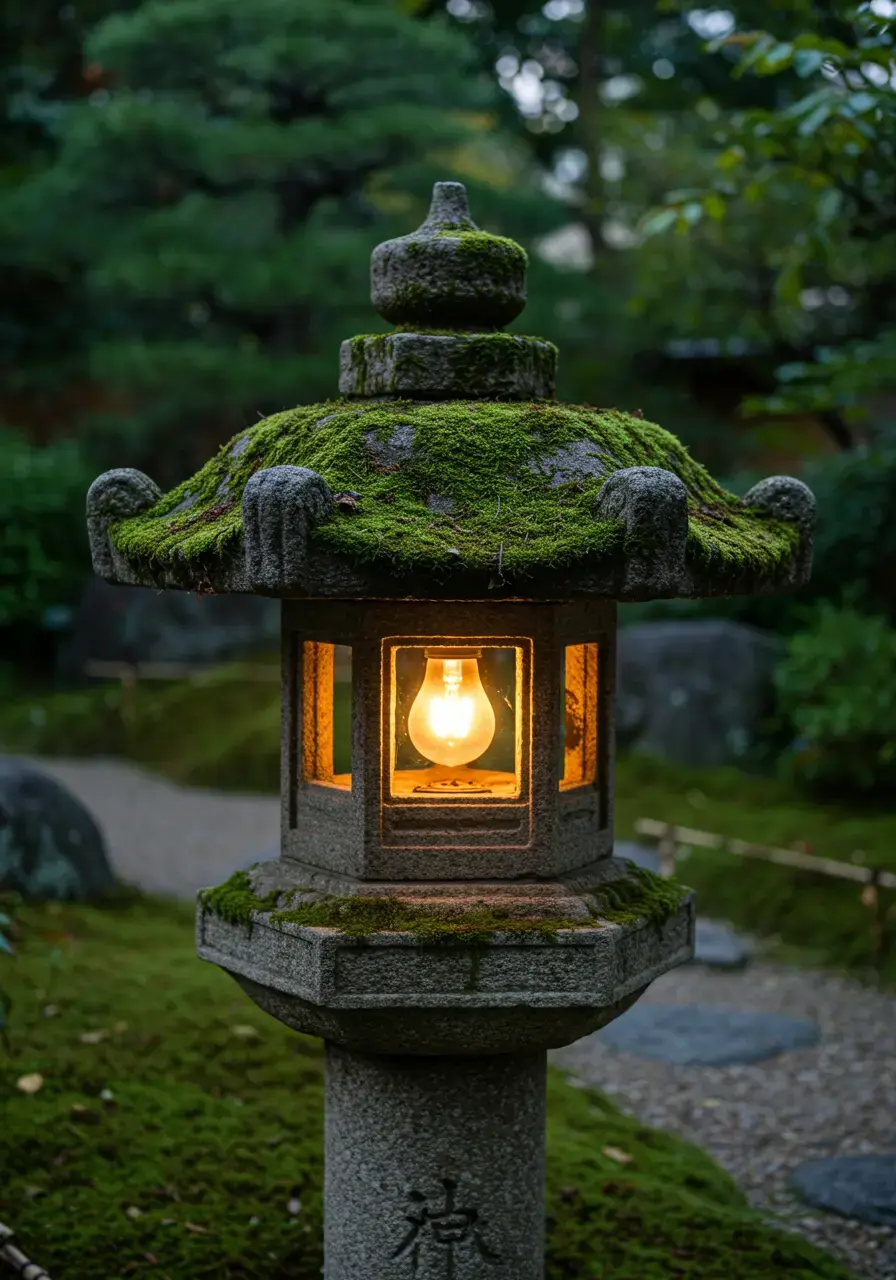
Why This Works:
Traditional lanterns add a historical and symbolic layer. They provide subtle lighting and act as anchors within the landscape composition.
How You Can Recreate It:
- Choose a stone, metal, or wood lantern style that fits the scale of your garden.
- Place the lantern near a pathway, water feature, or seating area.
- Use low-wattage lighting (or even a candle) to create a soft, inviting glow in the evening.
Design a Serene Zen Sand Garden Area
Creating a small Zen sand garden area was one of the most therapeutic parts of designing my space. The act of raking the sand, creating those perfect ripples, is incredibly meditative. It’s a miniature landscape that invites quiet contemplation.

Why This Works:
Zen sand gardens, or karesansui, are abstract representations of water and landscapes, encouraging emptiness and mindful raking as a form of meditation.
How You Can Recreate It:
- Designate a small, level area for your sand garden.
- Fill it with fine gravel or coarse sand, ensuring it’s deep enough to rake.
- Use a specialized sand rake to create wave or ripple patterns around strategically placed rocks.
Plant Authentic Flora for Garden Appeal
Choosing the right plants is crucial for that true Japanese garden feel. It’s not about having a riot of color but selecting plants that have beautiful forms, textures, and seasonal interest. I focused on plants that evoke peace and simplicity.
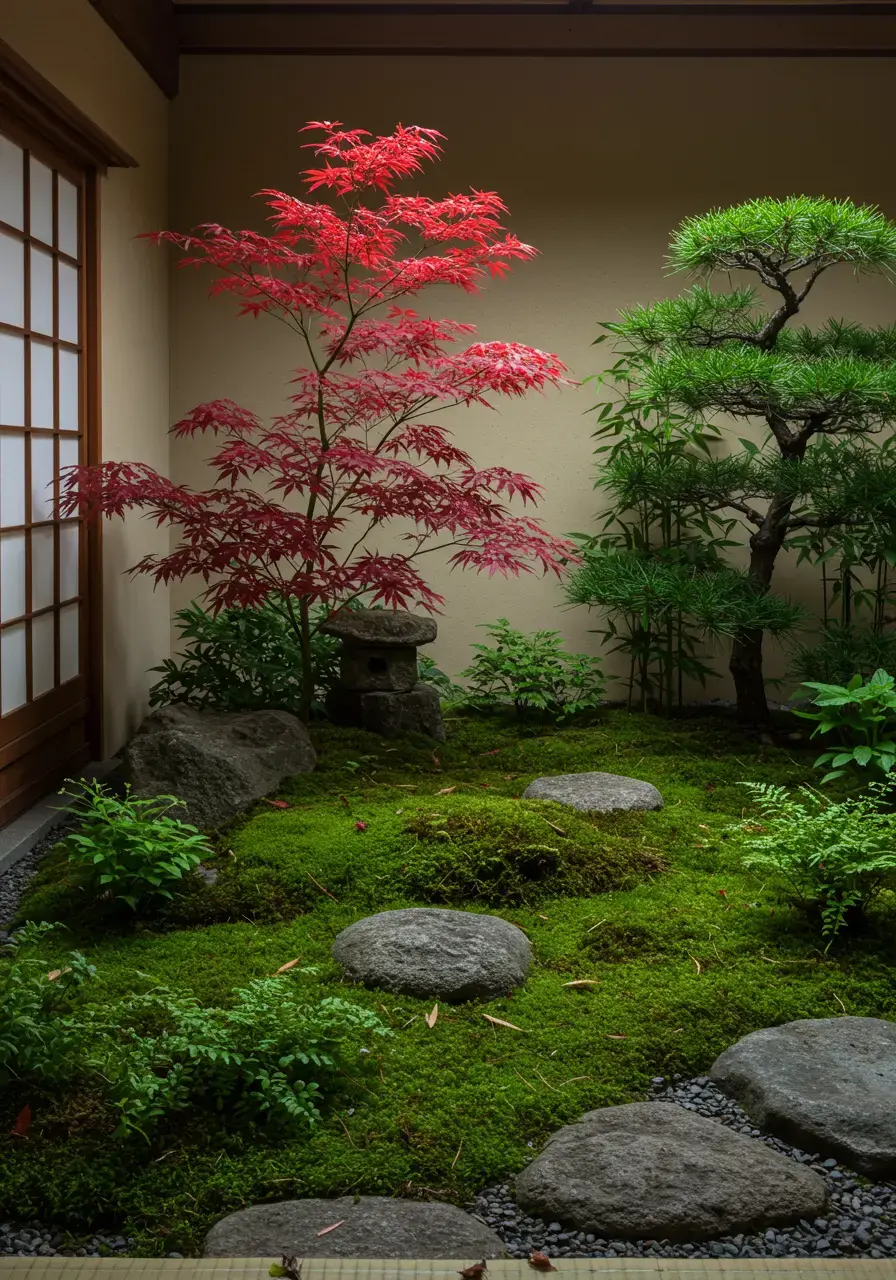
Why This Works:
Specific plants are traditionally used in Japanese gardens for their symbolic meaning, form, and ability to create a sense of timelessness and connection to the seasons.
How You Can Recreate It:
- Include plants like Japanese maples (Acer palmatum), moss, ferns, bamboo, and pines.
- Focus on varying shades of green and subtle seasonal changes like fall color or spring blossoms.
- Arrange plants thoughtfully, considering their mature size and shape to create pleasing compositions.
Use Stones and Gravel for Garden Pathways
Pathways in a Japanese garden are more than just ways to get from one point to another; they are part of the journey. Using stones and gravel creates beautiful, textured paths that encourage you to slow down and appreciate the experience. I loved the crunch of the gravel underfoot; it’s part of the sensory experience.
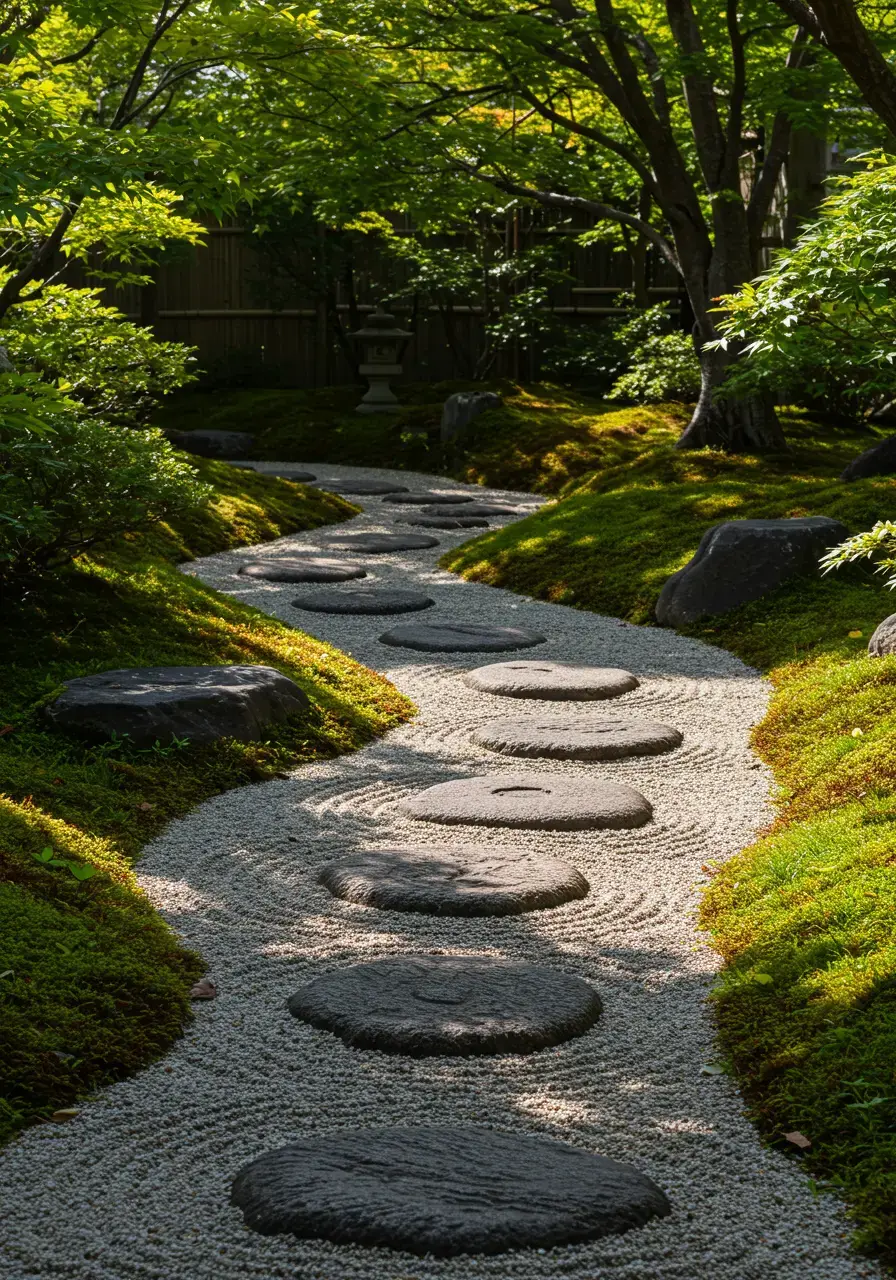
Why This Works:
Pathways made of natural materials like stone and gravel blend seamlessly with the landscape and the act of walking on them can be a mindful experience.
How You Can Recreate It:
- Lay stepping stones (tobi-ishi) with irregular spacing to encourage slow, deliberate steps.
- Fill the spaces between stones or designated areas with gravel, raked into patterns.
- Ensure pathways meander slightly rather than being perfectly straight, mimicking natural trails.
Build a Simple Viewing Platform
sometimes, the best way to appreciate the tranquility of a Japanese garden is to simply sit and observe. Building a small platform or deck gave me a dedicated spot to do just that. It’s like having your own private window into a peaceful world.

Why This Works:
A viewing platform provides a designated space for quiet contemplation and offers a unique perspective from which to appreciate the garden’s design and details.
How You Can Recreate It:
- Construct a small, low wooden deck or platform in a location with a good view of the garden.
- Keep the design simple and unobtrusive, using natural wood.
- Add a simple bench or cushion for comfortable seating.
Mindful Arrangement of Garden Elements
Everything in a Japanese garden, from the placement of a single stone to the curve of a path, is intentional. It’s not random; it’s a careful composition. I approached arranging elements in my garden with a sense of purpose, thinking about balance and harmony.
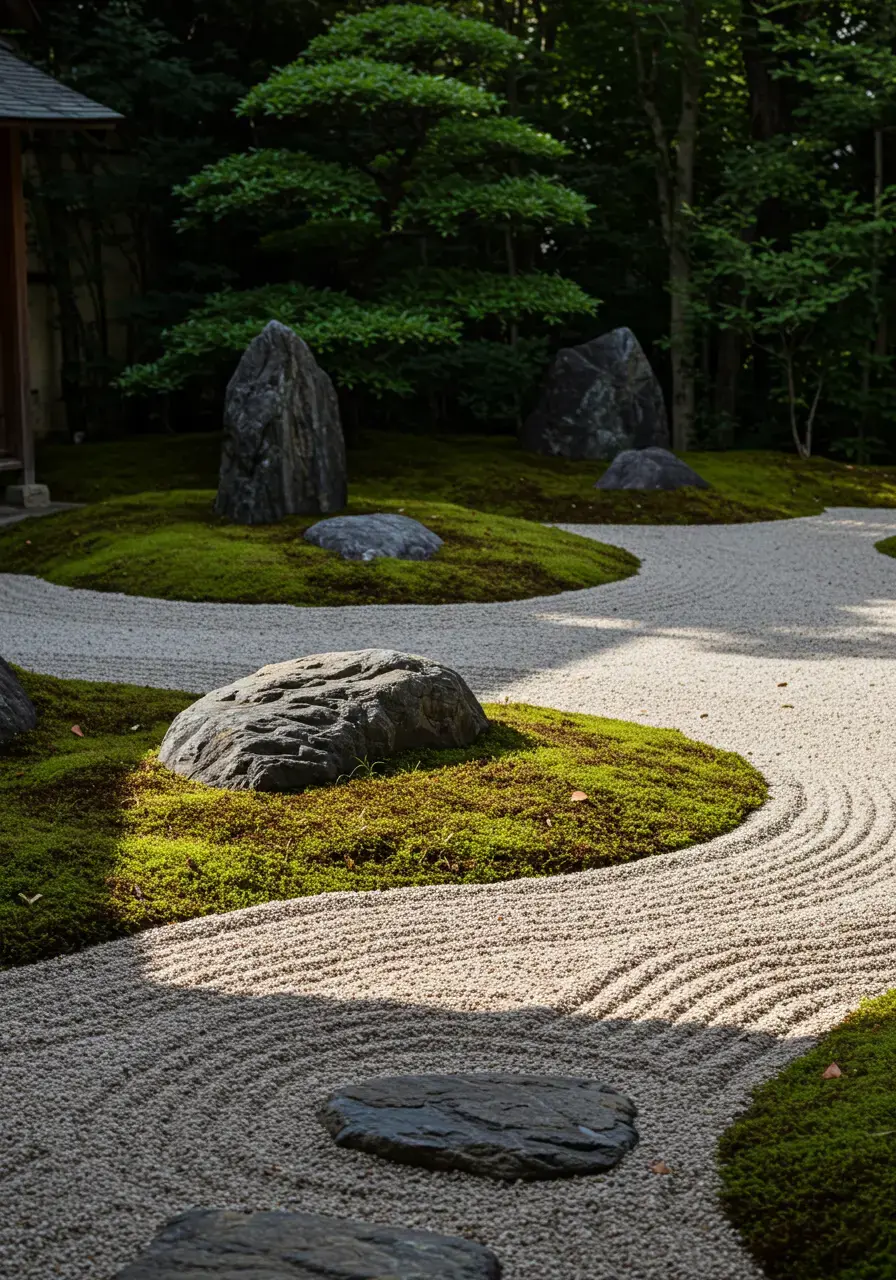
Why This Works:
Mindful arrangement creates a sense of balance, harmony, and intentionality, reflecting the philosophical principles of Japanese garden design like asymmetry and naturalism.
How You Can Recreate It:
- Think about the overall flow and perspective of your garden space.
- Arrange elements in odd numbers (groups of three or five are common) to create a natural, asymmetrical feel.
- Consider negative space and allow elements to breathe; don’t overcrowd the garden.
Embrace Minimalism in Garden Design
Perhaps the most important lesson I learned is the power of less. Japanese gardens are often about simplicity and restraint. Embracing minimalism means focusing on a few key elements and letting them shine, rather than filling the space with too much stuff. This approach is key to achieving that Zen tranquility I was looking for.
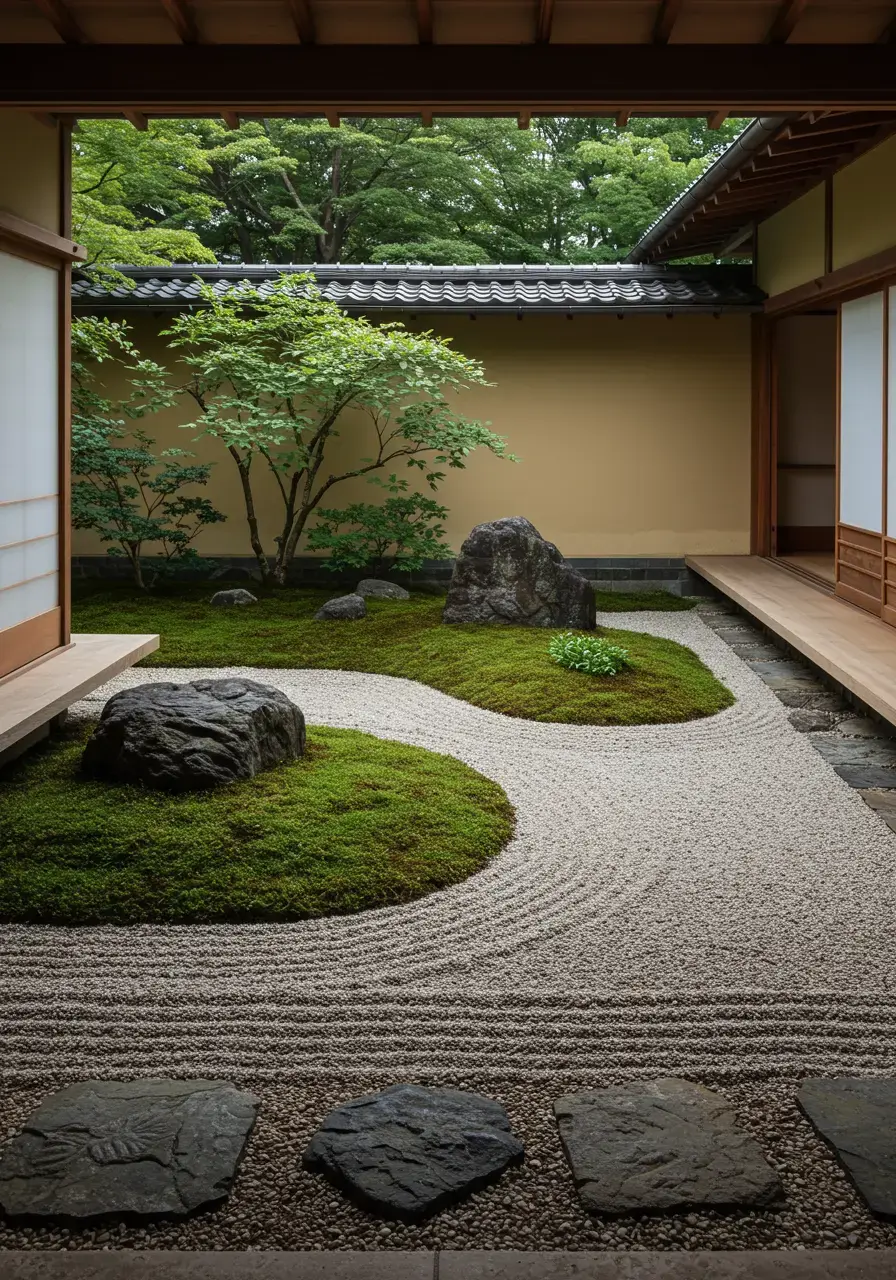
Why This Works:
Minimalism removes visual clutter and distractions, allowing the mind to quiet down and focus on the essential beauty of the natural elements present in the garden.
How You Can Recreate It:
- Avoid overcrowding your garden with too many plants or decorative items.
- Choose a limited palette of materials and colors.
- Focus on clean lines and clear spaces, allowing each element to have its own presence.
Conclusion
Creating a Japanese garden, or even incorporating a few of these elements, isn’t just about landscaping; it’s about cultivating a feeling. It’s about designing a space where you can slow down, breathe deeply, and find a moment of peace. These 10 Japanese garden ideas have truly transformed my outdoor space into a sanctuary, and I truly hope they inspire you to create your own little corner of Zen tranquility.


